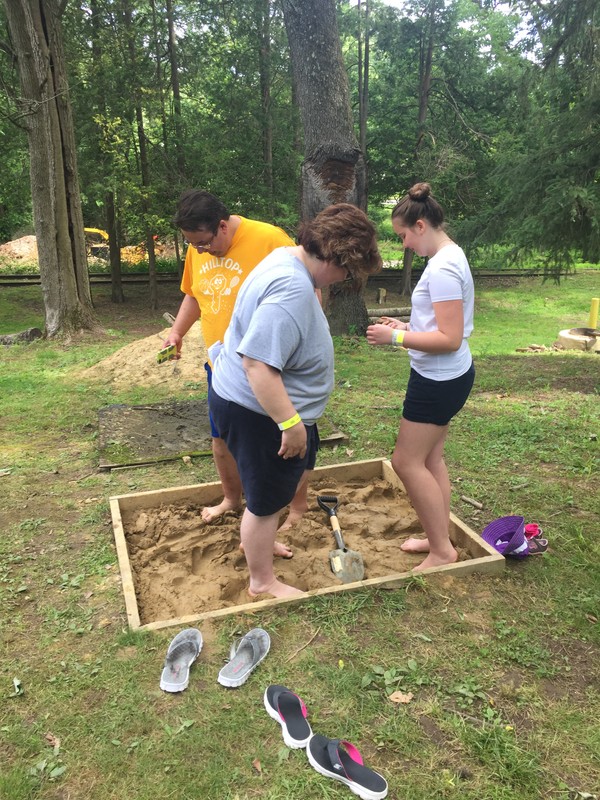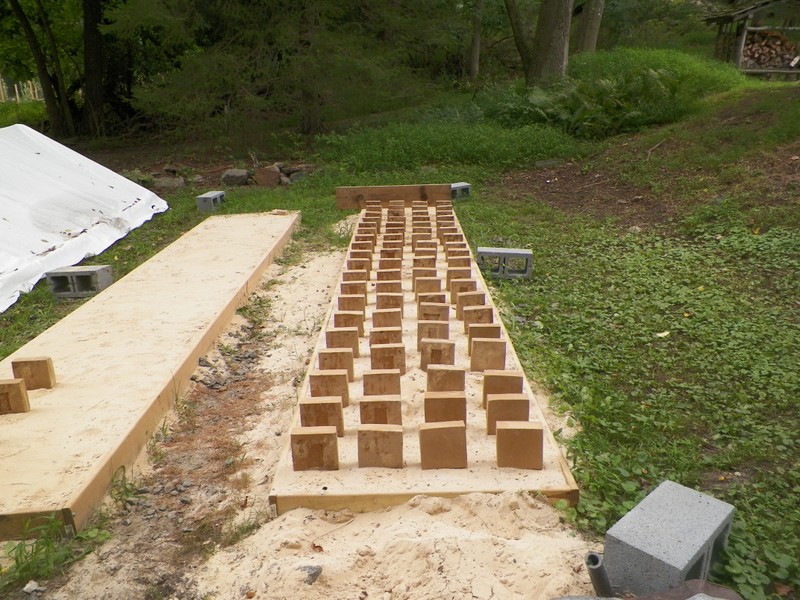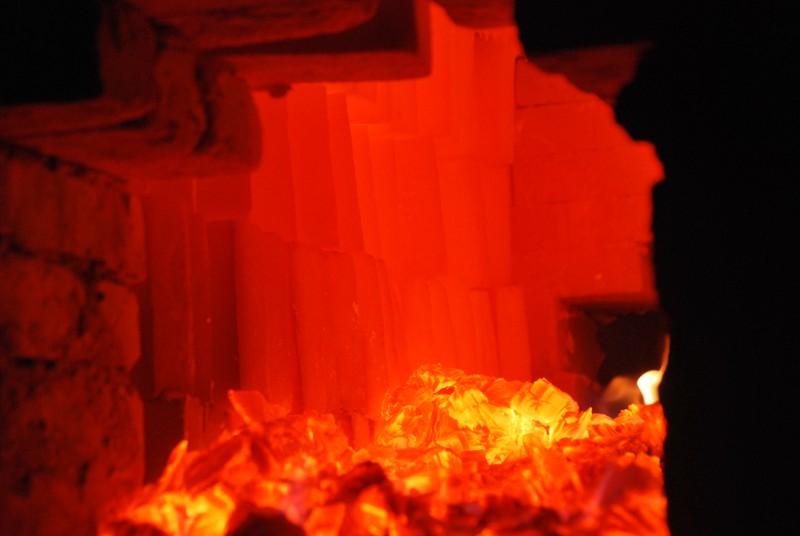Brickmaking Area
Introduction
Text-to-speech Audio
Images
The clay has to be worked to the right texture before shaping into bricks--a process traditionally done by treading on it with bare feet.

The clay is formed into bricks on a table using wooden molds.

The bricks are air-dried in a pit of sand (located across from the ramp to the Bank Barn) before being fired. This removes excess moisture and helps prevent cracking.

A temporary clay kiln is built to harden the bricks.

In order to properly harden the bricks, the kiln must reach and maintain extremely high temperatures.

Backstory and Context
Text-to-speech Audio
While many of the houses, mills, and other structures built in the 18th century Mid-Atlantic region were constructed primarily out of stone, bricks were often utilized for the chimneys and hearths.
In 2012 and 2013, NGM partnered with New Castle Historical Society (NCHS) to reproduce bricks for a hearth restoration. While restoring a chimney in the Historic Amstel House, a fragment of a special hearth brick was discovered. NCHS decided to manufacture replacement bricks for the hearth restoration and approached NGM. The planning team examined sources on brick making tools and techniques and spoke with individuals involved in brick making projects.
Since then, NGM has continued to offer demonstrations of brickmaking for special events and educational programs.
Sources
Newlin Grist Mill Research Projects, Newlin Grist Mill. Accessed December 17th 2020. https://newlingristmill.org/ngm-research/.
Newlin Grist Mill
Newlin Grist Mill
Newlin Grist Mill
Newlin Grist Mill
Newlin Grist Mill
